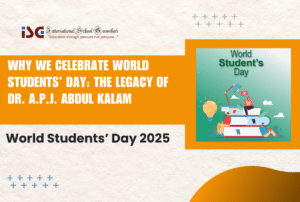![]()
In the ever-evolving education landscape, there are a lot of benefits of blended learning. Innovation in traditional teaching methods can cater to a larger and more diverse student base. Blended learning paves the way for different learning styles and technological advancement. Multiple institutes and platforms are recognizing the impact of blended learning on students as a new milestone.
Blending the best of both worlds—traditional classroom instruction and online learning—offers a myriad of benefits that revolutionize the educational experience. In this blog, we’ll delve into the profound advantages of blended learning and how it is reshaping the future of education.
What is Blended Learning?
Blended learning is a teaching and learning process that involves both traditional learning methods as well as online or digital resources. It is also known as hybrid learning technique. This blends the traditional process of face-to-face education with digital techniques like online assessments ensuring flexibility and adaptability for the students.
Superb Benefits of Blended Learning
- Flexibility: Students can learn at their own pace and schedule, both online and offline.
- Personalization: Blended learning allows for individualized learning paths and caters to different learning styles.
- Engagement: The variety of learning methods keeps students more engaged and motivated.
- Collaboration: Online tools and classroom activities can foster collaboration and communication skills.
- Cost-effectiveness: Combining online resources with physical classroom time can potentially reduce costs.
People have often described blended learning as a car that uses both gasoline and electricity. The catch is that the car switches between gasoline and electricity as and when necessary. Tag along as we discuss each of the features in detail.
1. Flexibility and Convenience
Blended learning provides unparalleled flexibility which allows students to access different avenues. Students can pace the study material and resources at their own pace. Students can tailor their learning experience to suit their individual needs and preferences. Reviewing lecture notes, participating in discussions, or completing assignments is not a worry for students anymore. This enhances and also provides time for students who have other commitments to fulfil.
2. Personalized Learning Paths
After the advent of online learning platforms and resources, it has become easier for educators to personalise learning for each student. Teachers do not have to linger and stay confused anymore about the strengths and weaknesses of students. Data analytics and adaptive learning technologies have helped to identify individual qualities, allowing targeted interventions. This personalised approach ensures that students receive the support they need to excel in their studies.
3. Enhanced Engagement and Interaction

Blended Learning Benefits for Teachers fosters a dynamic and interactive learning environment. A lot of traditional classroom activities are complemented by the introduction of blended learning.
- Online discussions, multimedia presentations and collaborative projects are some of many new methods integrated by blended learning.
- These activities boost various learning styles, keeping students engaged and motivated.
- The interactive nature of blended learning also encourages peer-to-peer collaboration, fostering a sense of community among learners.
4. Immediate Feedback and Assessment
Feedback and assessment of students are not an issue anymore. By using online tools and platforms, educators can instantly assess their student’s progress. This prompt feedback loop is invaluable for student progress, allowing them to understand their mistakes and make necessary corrections in real time. In addition, many educators use this method of data analytics as a tracking avenue. Helping students to enable and identify trends and adjust to teaching strategies according to their comfort.
5. Access to a Wealth of Resources

Blended learning opens the door to a vast array of digital resources. Ranging from e-books and videos of simulations and virtual labs makes blended learning for skill development an integral part of any student’s life. With time and cost savings in blended learning, students get access to a wealth of educational materials. This not only enriches the learning experience but also prepares students for a technology-driven world.
6. Cost-Effectiveness
Educational institutes have employed blended learning as a cost-effective solution. Added to cost-effectiveness, blended learning has enhanced the potential reach for a broader audience. After significant cost savings via doing classes on online platforms, institutes are able to allocate resources for improvement in the quality of education.
Challenges to Blended Learning Today
Even though we are way far along the digitization process, there are hindrances to blended learning that are preventing it from growing. Take a look at the major hindrances to it!
- Access to Technology: While blended learning is growing across the nation and the world, inaccessibility to proper technology makes it hard for students to pick up speed. Schools in India are still struggling to arrange digital resources for a variety of reasons like lack of budget.
- Distractions: Distractions can happen when you’re learning online, and some students may miss the structure and quick response of a real classroom. This could make students less motivated and interested.
- Lack of Assessments: It can be harder to tell how much students have learned in mixed learning settings where some learning takes place online and some offline. Careful planning and the use of a variety of testing methods are needed to make sure that evaluations are fair and accurate.
Bottom Line
As we navigate the 21st-century educational landscape, we have to embrace the benefits of blended learning. For strategic learning experience with the benefits of flexibility, personalization, enhanced engagement, immediate feedback, and access to diverse resources. Blended learning has emerged as an immediate contribution to a holistic and effective learning experience.
By incorporating the strengths of both traditional and online learning, blended learning is paving the way for a more inclusive, adaptive, and student-centered approach to education. The future of learning is indeed blended, offering a transformative journey for both educators and learners alike.








